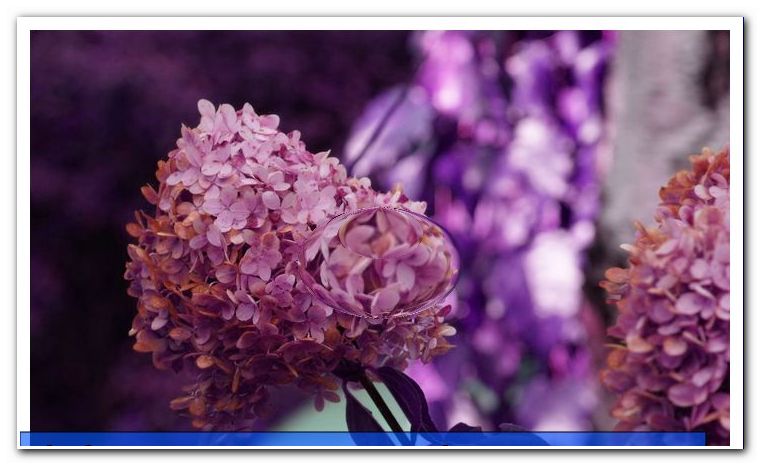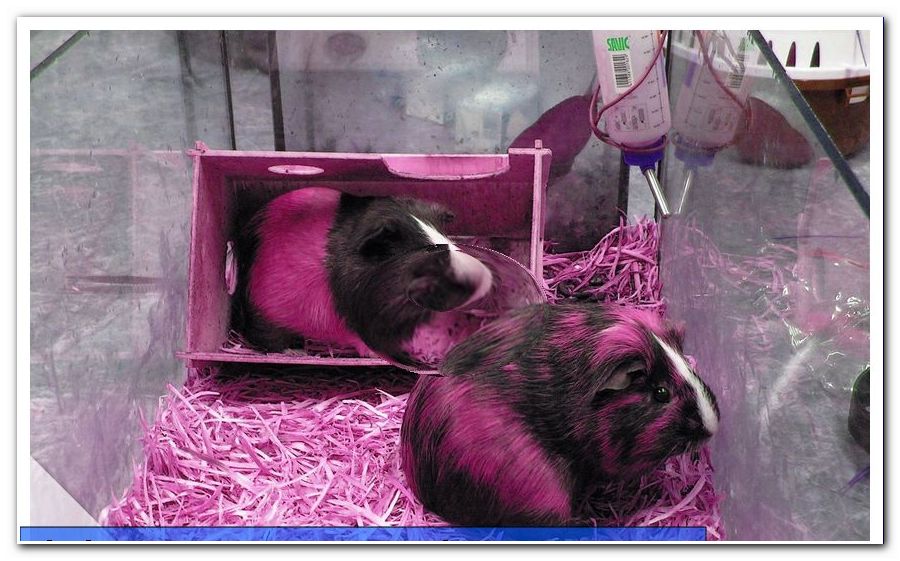Sewing teddy bears yourself - instructions + free sewing pattern

- Material and preparation
- Sewing instructions - Sew the teddy bear
- Quick guide
I thought a bit about teddy bears. First of all, I remembered only the classic teddy bear, in which the arms, the legs and the head are independent of the body movable. But this classic teddy bear is an art in itself and not very easy to sew. It is not for nothing that there are seamstresses who specialize in it. But here I would like to show you a tutorial that can be easily implemented by sewing beginners. The extremities will not be rotatable by 360 degrees, but I would like to achieve a certain degree of flexibility.
So in this tutorial, you'll learn how to sew a teddy bear that does not do arm circles, but is not quite immovable - and cuddly soft, of course, so that it can be beautifully braced. It is a simple variant that is easy to implement even for beginners and for which you can also use a variety of materials.
Difficulty level 2/5
(for beginners with this instruction implementable)
Material costs 1/5
(depending on the choice of fabric between EUR 0, - from the remaining utilization and EUR 25, -)
Time required 3/5
(including pattern creation depending on the exercise 2.5 to 3h)
Material and preparation
Material selection and material quantity
Fellstoff or teddy plush is used classically, there are innumerable materials from different basic materials with the most different qualities from bio-natural to 100% chemically produced. If you sew your teddy bear according to my pattern, you can also use normal cotton fabrics. With woven fabric, the bear becomes a little firmer, with knitted fabrics (especially with elastane ) it becomes more flexible.
I decided on the teddy bear project for mustard yellow organic summerweat (also called French terry). The applications I have tailored from various fabric remnants and the Bommelschwänzchen was made of brown Niki.
patterns

You can also sew my pattern for the teddy bear 1: 1. Draw it off by hand or stick to the dimensions as you prefer.
You can also customize the shapes or completely redraw if you want to sew another animal as a cuddly friend. In that case, you may also like to read my instructions here: sewing stuffed animals
cut out
Since the teddy bear that I would like to sew here should be stuffed, I take a more generous seam allowance than usual - at least 1 cm. The seam allowance is added all around. I cut the fabric in double layer of fabric - once the front and once the back of the teddy bear. In addition, I cut a small circle, which will later become the Bommelschwanz.

Prepare the application
If you want to apply eyes, nose and mouth, do so immediately after cutting. After sewing or filling, you will not be able to get to the right places. For the application you can also gladly follow my tutorial for the applications. In addition, now also the optional applications for the ears are attached. I have also had good experiences with self-adhesive craft felt, which is then stitched like an application. However, I do not know how applied Bastelfilz behaves when washing. If you want to play it safe, use fabrics that you have already prewashed.

Tip: If you sew the teddy bear for a baby, you can embroider the face instead of the appliqués.
Another possibility would be the gluing of finished parts for eyes, nose, mouth and ears. Especially in the face area, it pays to attach ironing fleece. This increases stability and prevents your teddy bear later making "faces".
Sewing instructions - Sew the teddy bear
After applying, place the front and back pieces right to right (ie with the "nice" sides together) and pin both fabric layers together. Sew around once and leave to a turn-around opening. Where you place this reversal opening, you better consider in advance. It should be a place from which you can reach all extremities as well as ears and head separately. For me it is the "shoulder". Sew start and finish well.
Sew the two layers up with the side to which you have applied the appliqués so that you can adjust the seam line. For example, I like to sew around the inner ears with a half-foot distance so that they become evenly spaced. Basically, the shape of the bear is slightly smaller by the filling, so I also sew in general, just outside the pre-drawn seam line - again about half a foot wide, so the extra generous seam allowance.

Now cut the seam allowances back to about 0.5 cm.
Tip: You can leave the full length in the area of the turning opening, as this facilitates manual sewing at the end.
Cut any curves that are arched outward, such as on the ears, arms, and legs, at right angles to the seam. Make sure that you do not cut the suture with it. This allows the fabric to stretch better and they get nicer curves that do not warp. Turn the teddy bear and make it beautiful.

The Bommelschwänzchen
First sew a round with basting stitch around the circle, which is to serve as pompom tail for the teddy bear. I do this by hand, since there are only a few stitches.

Sew on only the beginning of the thread. Place crumpled stuffing in the middle and pull on the thread to make the circle close to a ball. If necessary, add some cotton wool and push the seam allowance into the ball. Then sew, so that the ball does not open again. DO NOT cut the thread, but sew the ball directly to the right (ie the "nice") side of the back piece.

Now fill in all the parts you want to demarcate. I start with my ears, then my head, my arms, and finally my legs. Each time after filling I steppe the corresponding part of the body with a triple straight stitch from the outside. Then I fill the hull and close the turning opening by hand with a mattress suture.
And the teddy bear is ready!

variations:
As already mentioned in the introduction, the teddy bear shown here is not the classic variant. An approximation would be a round head and extra sewn ears, as I have already shown in my tutorial for the fox.
The teddy bear can also deviate even further from the original, by simplifying the basic shape. An erected rectangle with ears and small indentations, for example, can also look very appealing. Likewise a pear-shaped body. You can also let your child draw and implement this creation. (Example sketches for Feli Fig. 25)
Quick guide
1. Draw a pattern or draw a template and cut it.
2. iron fleece (if necessary or desired)
3. Cut fabrics (with generous seam allowance)
4. Attach applications (if desired) or embroider or glue face
5. Sew together and turn
6. Bobo's Tail: Stitch circle, pull together and fill
7. Bobbin's tail: sew directly on the back of the teddy bear
8. Fill head, arms and legs in each case, press down a little and topstitch from the right
9. Fill the hull and close the opening
Finished!
The twisted pirate




